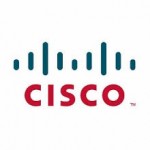This interview is an excerpt from our recent guide, 30 Government Innovations That Mattered in 2015 which examines 30 government case studies that explore innovation at all levels of government. Innovations that spanned the government job spectrum from human resources to cybersecurity and back again.
The ease of online services and digital resources are perks that citizens often associate with their favorite retailers — not government agencies.
Part of the reason is government has long been viewed as a heavily paper-based operation, despite efforts to adopt electronic records management and implement the Government Paperwork Elimination Act at the federal level. The law requires federal agencies to maintain records electronically and allow people to submit information or interact with agencies electronically, when feasible.
But the good news is the work hasn’t stopped there. Government websites have become more interactive, and agencies are using crowdsourcing and apps to better communicate with tech-savvy citizens.
“Government agencies have had the desire to digitize processes for a very long time, but now the technology is catching up with that desire,” said Gary Hall, Chief Technology Officer, Federal-Defense, at Cisco. “The big change over the last couple of years has been this rise of the Internet of Things (IoT) and the Internet of Everything (IoE). They have created a lot more data, and that’s a catalyst for an increased emphasis on digitization.”
IoE expands on the Internet of Things — which links smart objects to the Internet — to include people, process and data.
“Digitization represents a big shift,” Hall said. “It allows governments to unlock the value of the Internet of Everything and change from manual to digital business processes that directly benefit agencies’ lines of business.”
Those benefits include reduced costs, increased productivity and better service delivery to citizens.
“Digitization focuses on leveraging data analytics and machines to drive real business and mission outcomes,” Hall said. “Paper doesn’t go to scale. Paper doesn’t connect in real-time. We can’t send mail couriers all over the planet in milliseconds like we can with digital information.”
Agencies must realize there is no separation between their digital and business strategies because technology is key to the way government operates. But how do agencies unlock the value of digitization?
“For starters, it requires consensus,” Hall said. He explained that building consensus is one of the biggest hurdles that governments at all levels will face in their journey to digitization.
“Digitization can’t be successful as a solely top-down initiative from the CIO, but it also can’t really bubble up from the program level,” he explained. “It takes all of them working together. Successful digitization initiatives require buy-in and cooperation across all different elements of an agency. There’s a complexity that requires a lot of consensus.”
Going digital also requires funding, which is the last thing cash-strapped agencies can bear to hear. But there are ways to digitize operations without ripping and replacing existing IT systems. Instead, digitization requires agencies to be more creative with their limited funds. One option for agencies is to continue using existing resources throughout their lifecycle, while also using hybrid cloud services to broker new capabilities.
Remember, digitization starts with an understanding of business and mission objectives. Once those objectives are clear, agencies can begin rethinking their core business processes. Doing so can be easier said than done because this way of thinking requires agility and significant changes.
“It also means implementing agile IT and operational technology to embrace new security models, new types of hybrid cloud computing, more mobility, more social capabilities in their applications, and more analytics,” Hall said. “To unlock the value of these technologies, agencies need to move beyond traditional IT to a different model. It’s something we call Fast IT, which moves from managing IT in-house to hybrid cloud brokering, where you’re going out and getting the best services that you can for your money.”
As the need for increased digitization drives cloud adoption, agencies’ requirements for cost-effective, resilient and secure cloud services are growing. Hall noted that security is the biggest potential impediment to cloud adoption. He advised agencies to take a fresh and holistic look at security and consider everything, including the network, endpoint and application security, as well as things that are outside the purview of information technology. This includes operational security and physical security.
Agencies’ security strategies must account for broad and diverse cyber threats and identify and mitigate any risks associated with cloud adoption and digitization.
“It’s unlikely that we’ll ever completely eliminate cyber threats, so it’s important to weigh the value of digitization and to apply the appropriate safeguards to protect before, during, and after an attack,” Hall said. “But we also need to be careful not to be paralyzed into inaction because of the threat of security vulnerabilities and risks. Doing nothing may be a greater risk to meeting the mission objectives.”






Leave a Reply
You must be logged in to post a comment.